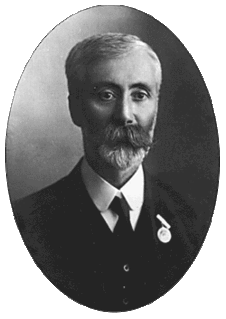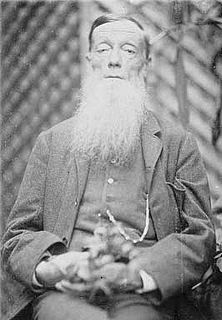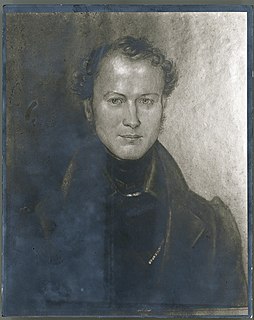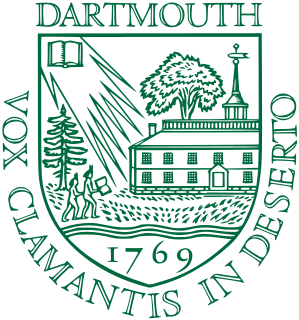
John Hutton Balfour was a Scottish botanist. Balfour became a Professor of Botany, first at the University of Glasgow in 1841, moving to the University of Edinburgh and also becoming the 7th Regius Keeper of the Royal Botanic Garden Edinburgh and Her Majesty's Botanist in 1845. He held these posts until his retirement in 1879. He was nicknamed Woody Fibre.

Amos Eaton was an American botanist, geologist, and educator who is considered the founder of the modern scientific prospectus in education, which was a radical departure from the American liberal arts tradition of classics, religious classes, lecture, and recitation. Eaton co-founded the Rensselaer School in 1824 with Stephen van Rensselaer III "in the application of science to the common purposes of life". His books in the eighteenth century were among the first published for which a systematic treatment of the United States was attempted, and in a language that all could read. His teaching laboratory for botany in the 1820s was the first of its kind in the country. Eaton's popular lectures and writings inspired numerous thinkers, in particular women, whom he encouraged to attend his public talks on experimental philosophy. Emma Willard would found the Troy Female Seminary, and Mary Mason Lyon, the Mount Holyoke Female Seminary. Eaton held the rank of senior professor at Rensselaer until his death in 1842.

Charles Sprague Sargent was an American botanist. He was appointed in 1872 as the first director of Harvard University's Arnold Arboretum in Boston, Massachusetts, and held the post until his death. He published several works of botany. The standard botanical author abbreviation Sarg. is applied to plants he identified.

Leonard Cockayne FRS is regarded as New Zealand's greatest botanist and a founder of modern science in New Zealand.

Joseph Henry Maiden was a botanist who made a major contribution to knowledge of the Australian flora, especially the Eucalyptus genus. This botanist is denoted by the author abbreviation Maiden when citing a botanical name.

Frederick Manson Bailey CMG was a botanist active in Australia, who made valuable contributions to the characterisation of the flora of Queensland.
William Trelease was an American botanist, entomologist, explorer, writer and educator. This botanist is denoted by the author abbreviation Trel. when citing a botanical name.
Christian Ferdinand Friedrich Hochstetter was a German botanist and Protestant minister born in Stuttgart. He was the father of geologist Ferdinand Hochstetter (1829–1884).

Lucien Marcus Underwood was an American botanist and mycologist of the 19th and early 20th centuries.

William Dunlop Brackenridge (1810–1893) was a Scottish nurseryman and botanist.
George Jackson (1790–1811) was an English botanist and author. He was born in Aberdeen in 1780 and was later in charge of A.B. Lambert's herbarium. On 2 February 1808 he was elected a Fellow of the Linnean Society and made important contributions to The Botanist's Repository. He formally described the genus Ormosia, publishing the description in Transactions of the Linnean Society.

William Hunt Painter was an English botanist who made a significant contribution to the science of Derbyshire vascular plant flora. He was a keen and wide-ranging collector of plant specimens, and was a member of the Botanical Exchange Club. In 1889 he published the first in a series of four books, all by different authors and spanning 120 years, all called The Flora of Derbyshire.
John Ernest Holloway, FRS was a New Zealand Anglican priest, botanist and university lecturer.

Jan Kops was an Anabaptist Dutch agronomist and botanist. His most notable contribution to botany was the founding of the long-lived journal "Flora Batava" in 1800 and contributing text for the first 10 volumes.
Benjamin Franklin "Frank" Bush was an American botanist and ornithologist. He was an expert on the flora of Jackson County, Missouri, and his lifelong research into the plant life of that area made it into one of the best known botanical regions in the United States.
Daniel Ludwig Ernst Betche was a German-Australian horticulturist and botanist.

Margaret Clay Ferguson was an American botanist best known for advancing scientific education in the field of botany. She also contributed on the life histories of North American pines.
Karl Theodor Rümpler was a German botanist and horticulturist.
Very Rev Dr Thomas Brown DD FRSE (1811–1893) was a Scottish minister in the Free Church of Scotland who rose to its highest rank, Moderator of the General Assembly in 1890. He was a noted geologist and botanist. He wrote prolifically on the history of the Disruption of 1843.
Ezra Jacob Kraus was an American botanist and horticulturist. Kraus was born in Ingham County, Michigan and earned a bachelor's degree at Michigan State Agricultural College in 1907. He taught horticulture at Oregon State College, for several years before earning a PhD in botany at the University of Chicago in 1917. He returned to Oregon State where he served as dean of the Division of Basic Arts and Sciences (1917–1919), and in 1919 was hired by the University of Wisconsin, where he taught botany until 1927. He then taught at the University of Chicago from 1927 until his official retirement in 1949, after which he became a visiting professor at Oregon State College. He died in 1960 in Corvallis.















